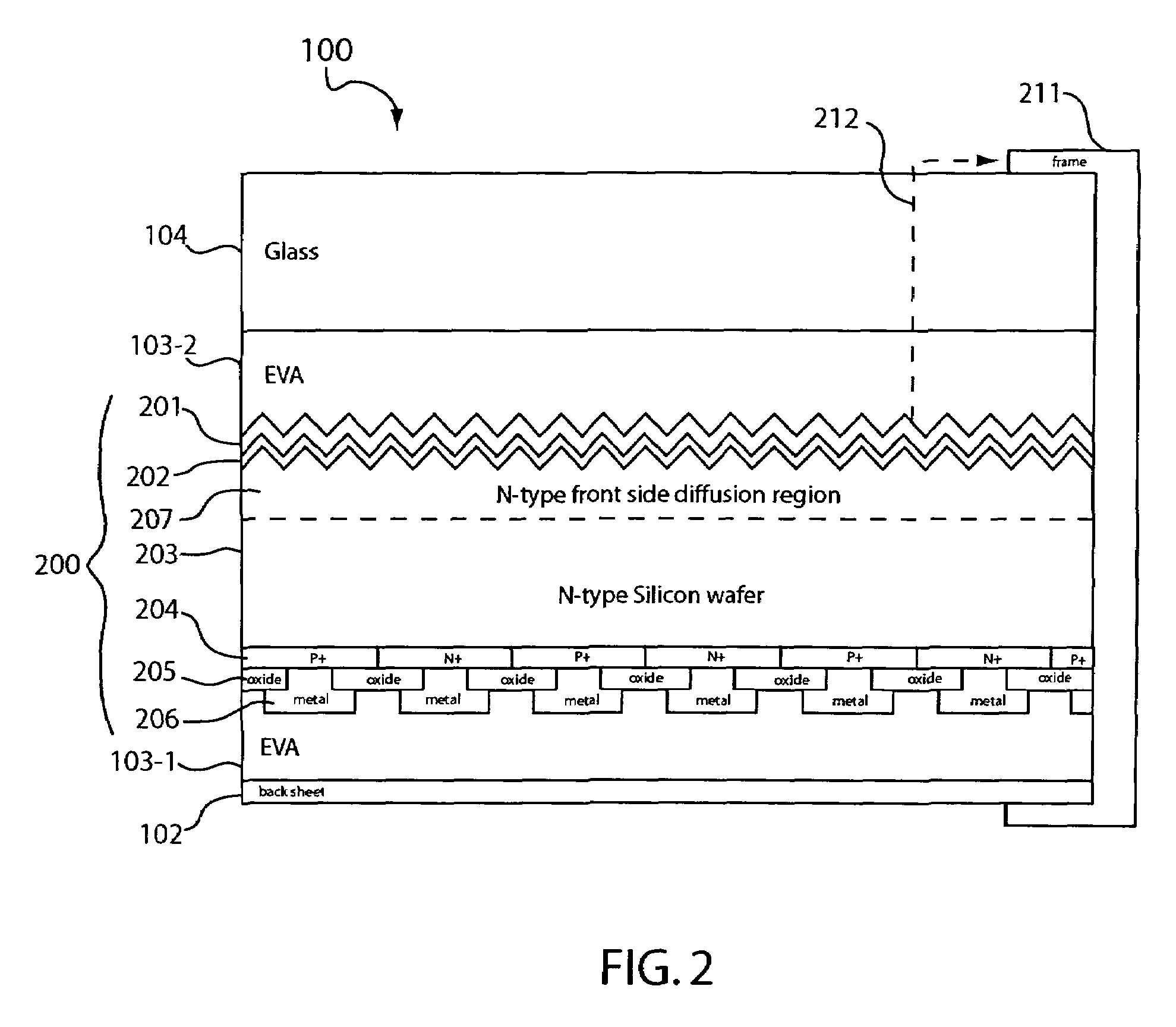Preventing harmful polarization of solar cells
a solar cell and polarization technology, applied in the field of solar cells, can solve problems such as reducing output power
- Summary
- Abstract
- Description
- Claims
- Application Information
AI Technical Summary
Benefits of technology
Problems solved by technology
Method used
Image
Examples
Embodiment Construction
[0016]In the present disclosure, numerous specific details are provided, such as examples of apparatus, components, and methods, to provide a thorough understanding of embodiments of the invention. Persons of ordinary skill in the art will recognize, however, that the invention can be practiced without one or more of the specific details. In other instances, well-known details are not shown or described to avoid obscuring aspects of the invention.
[0017]Referring now to FIG. 1, there is shown an exploded view of an example solar cell module 100 that may take advantage of embodiments of the present invention. Such a solar cell module is also disclosed in commonly-assigned U.S. application Ser. No. 10 / 633,188, filed on Aug. 1, 2003. It is to be noted, however, that embodiments of the present invention are also applicable to other solar cell modules.
[0018]In the example of FIG. 1, the solar cell module 100 includes a transparent cover 104, encapsulants 103 (i.e., 103-1, 103-2), a solar ...
PUM
| Property | Measurement | Unit |
|---|---|---|
| thickness | aaaaa | aaaaa |
| thickness | aaaaa | aaaaa |
| thickness | aaaaa | aaaaa |
Abstract
Description
Claims
Application Information
 Login to View More
Login to View More - R&D
- Intellectual Property
- Life Sciences
- Materials
- Tech Scout
- Unparalleled Data Quality
- Higher Quality Content
- 60% Fewer Hallucinations
Browse by: Latest US Patents, China's latest patents, Technical Efficacy Thesaurus, Application Domain, Technology Topic, Popular Technical Reports.
© 2025 PatSnap. All rights reserved.Legal|Privacy policy|Modern Slavery Act Transparency Statement|Sitemap|About US| Contact US: help@patsnap.com



